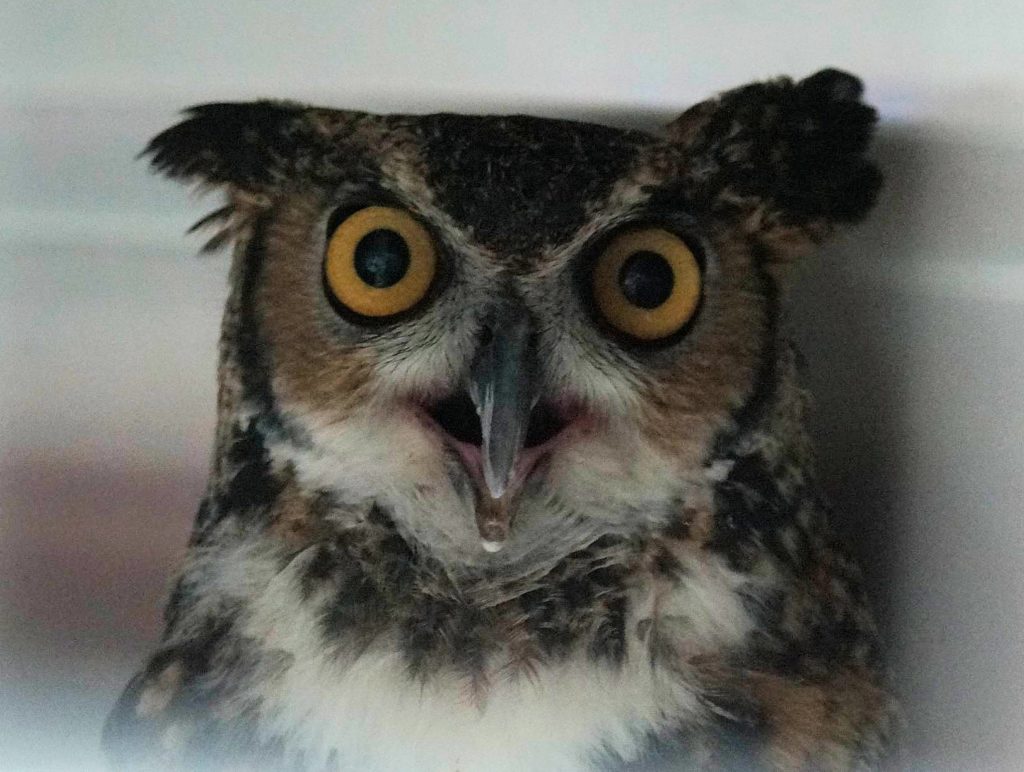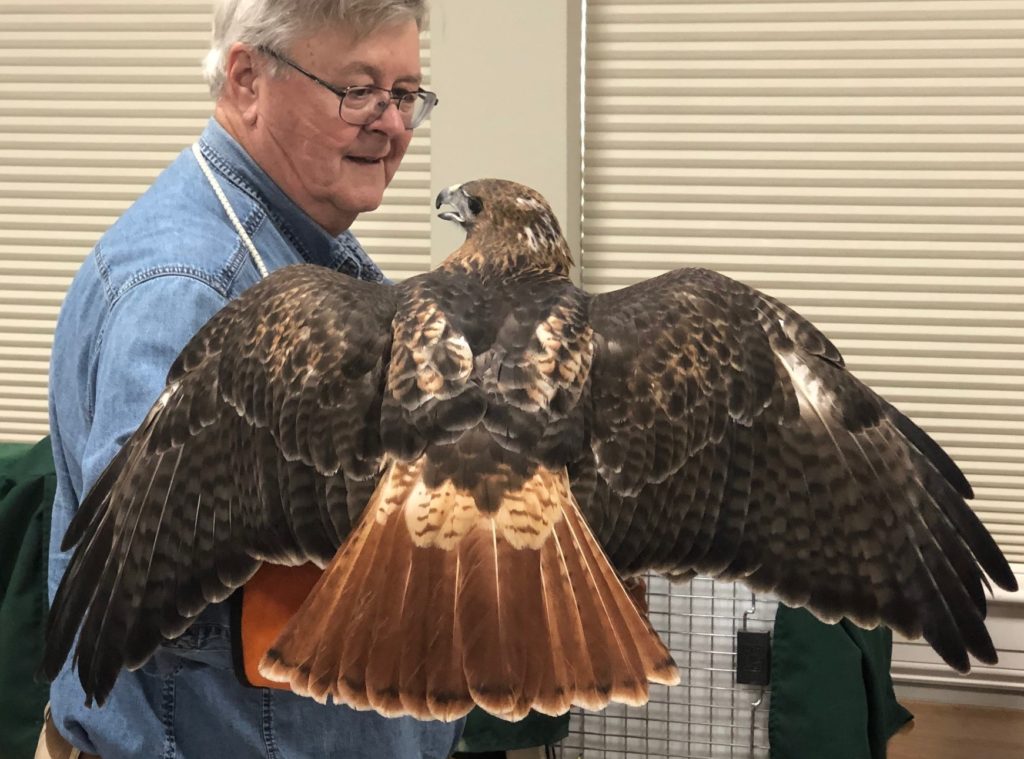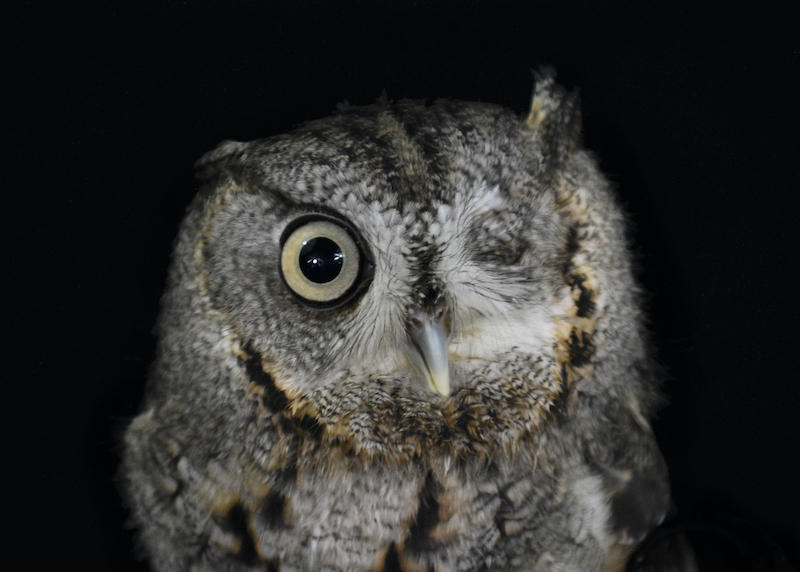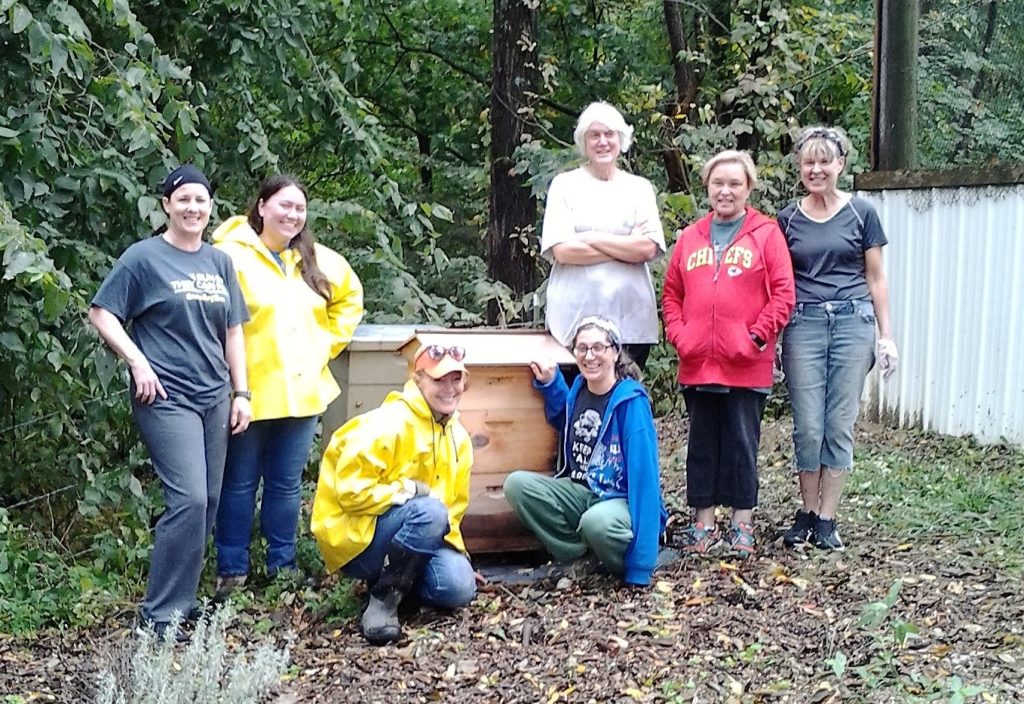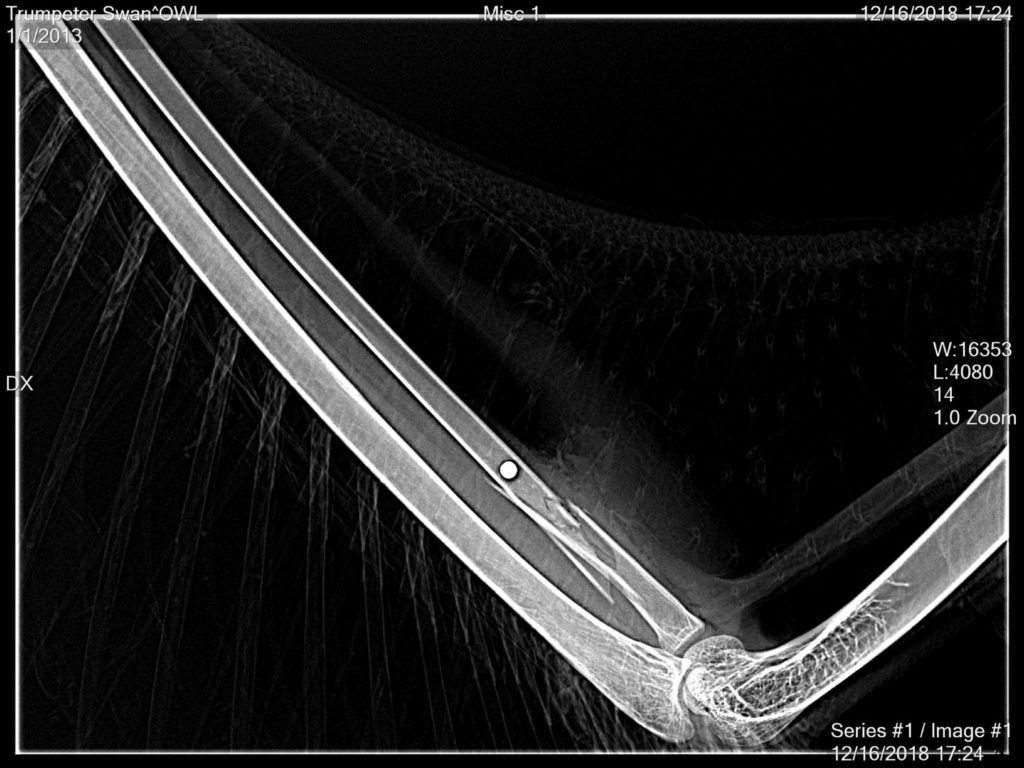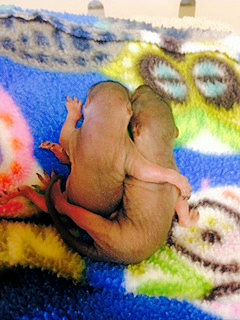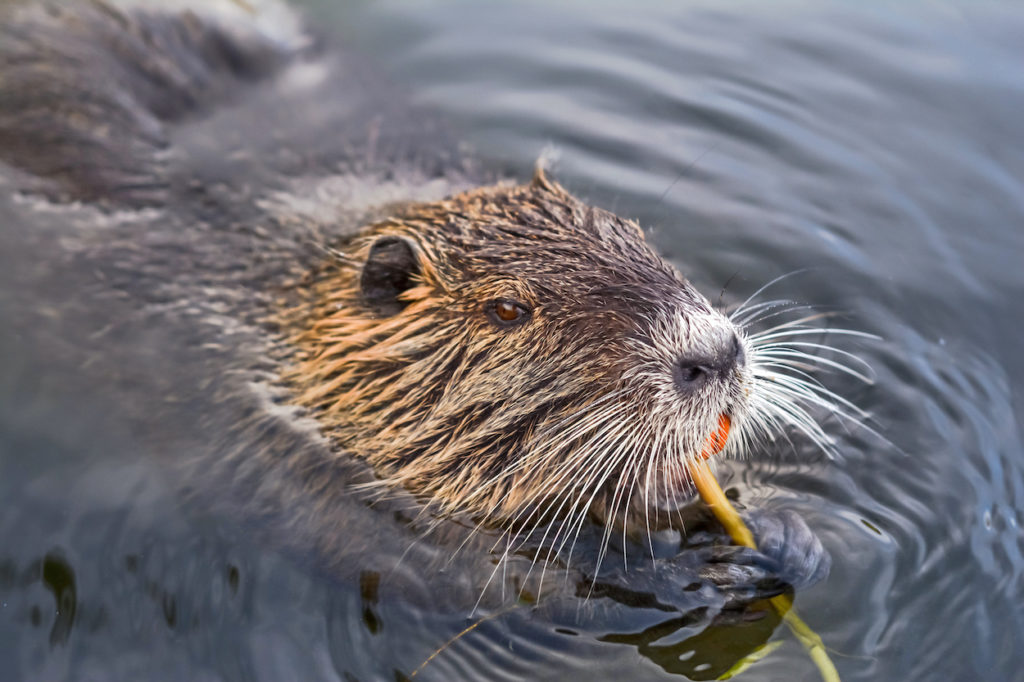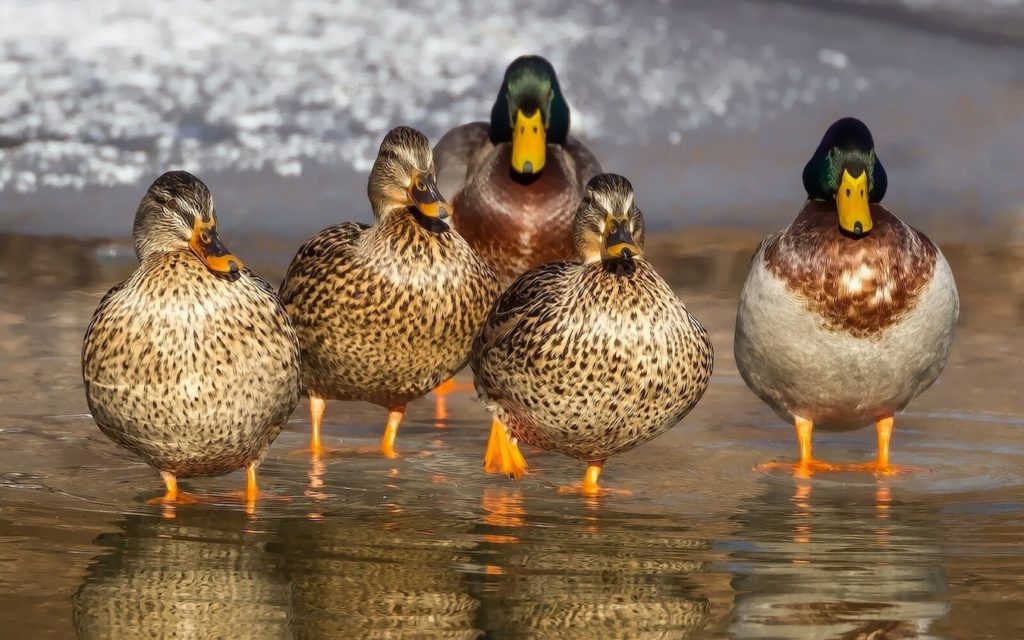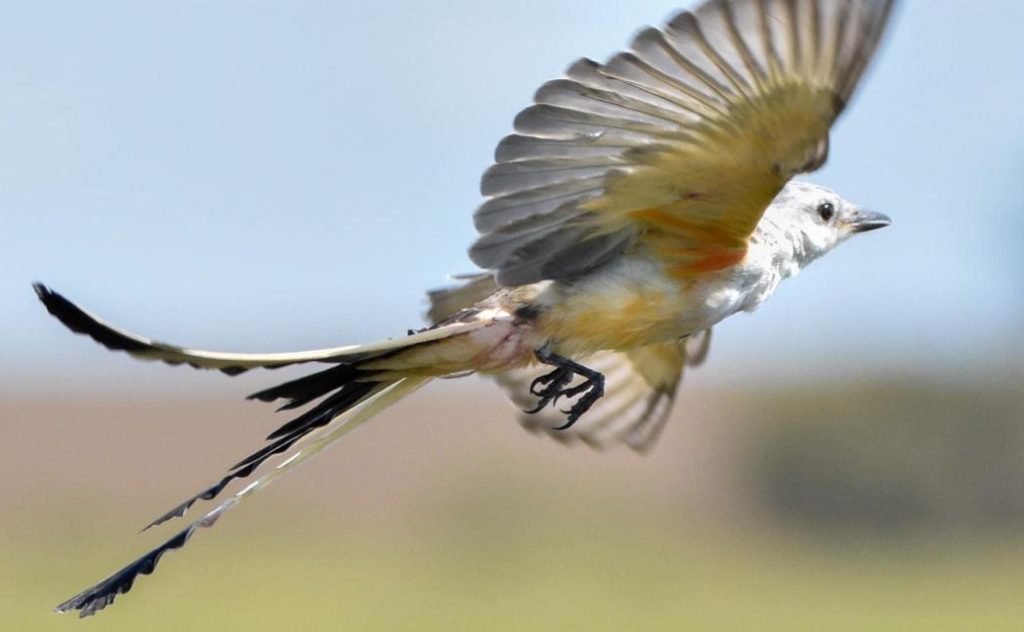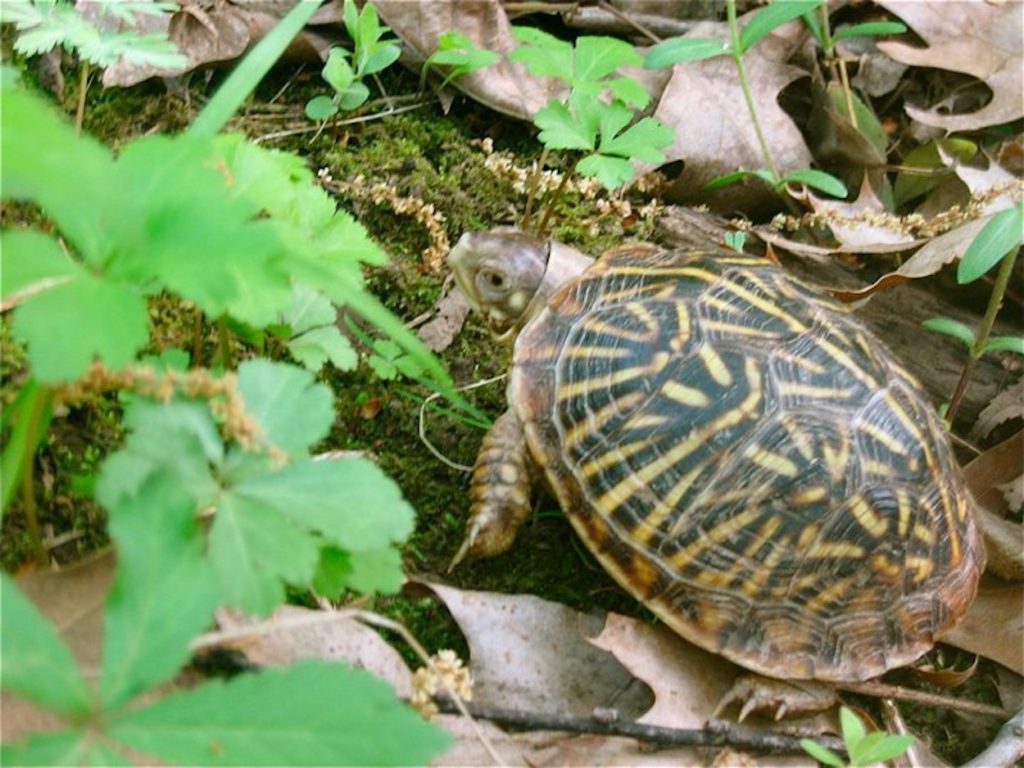About
Coyotes and Foxes
Coyote
Breeding: Five to 10 pups in March – April.
Active: Late afternoon, early morning.
Diet: Mice, squirrels, rabbits, carrion, fruit, insects.
The coyote has emerged as the foremost canine predator in the West. Having survived all attempts at eradication (hunting, trapping, shooting, poisoning), this species has remained a strong link in the ecological cycle.
As with many wild animals, coyotes, when left alone, will regulate their own members. If coyotes in a certain area are killed, die, or are relocated, the remaining members will fill the vacancies, either with larger litters or by allowing outsiders to move into the area.
Due to the rapid loss of habitat by over-development, many coyotes have found themselves co-existing with humans, often to the humans’ dismay. With a little knowledge, we can learn to co-exist with this native species. Eradication of the coyote disturbs the ecosystem of that area and will not solve the problem of dealing with the urban coyote. Education and co-existence are key.
Fox
Breeding: January – February with 3-8 kits in March – April. Foxes do not cross with dogs, coyotes, or wolves because they are not the same genus.
Active: Late afternoon, early morning.
Diet: Omnivorous: rabbits, meadow voles, squirrels, chipmunks, woodchucks, deer mice, game birds, wild fruits, grass, beetles, crickets, earth worms, frogs (leopard, pickerel and wood), gooseberries, crowberries, blueberries, blackberries, serviceberries, Saskatoon berries, and mulberries. Some foxes eat melons, fallen plums, peaches, sweet corn, persimmons, beechnuts, acorns, hickory nuts, grasshoppers, crickets, rats, and carrion. At all times, red foxes will kill every mole, shrew, or snake they can find but seldom eat any of them.
Size: Weight is eight to 11 pounds. 38 to 42 inches long; tail is approximately 14 to 16 inches of that length. 14 to 16 inches high at the shoulder. Females go into estrus in January or February (they are monoestrus, meaning they have one heat period a year).
- Gestation period of 51 days.
- One litter per year.
- Some fox families share the same dens.
- If den is disturbed or scattered, other females will take in and nurse orphaned babies.
- Male and female share in the raising of the kits.
- Kits begin to venture out of the den at about six weeks and by late August, a fox family has split up. The red fox is the most social member of the canine family in North America, and except in breeding season, it does not use a den.
We Found a Baby Coyote/Fox
Coyotes mate in early spring and have litters of five to seven pups born in late April or May. Both parents care for the young, which remain with the family as they learn to hunt and behave as adults.
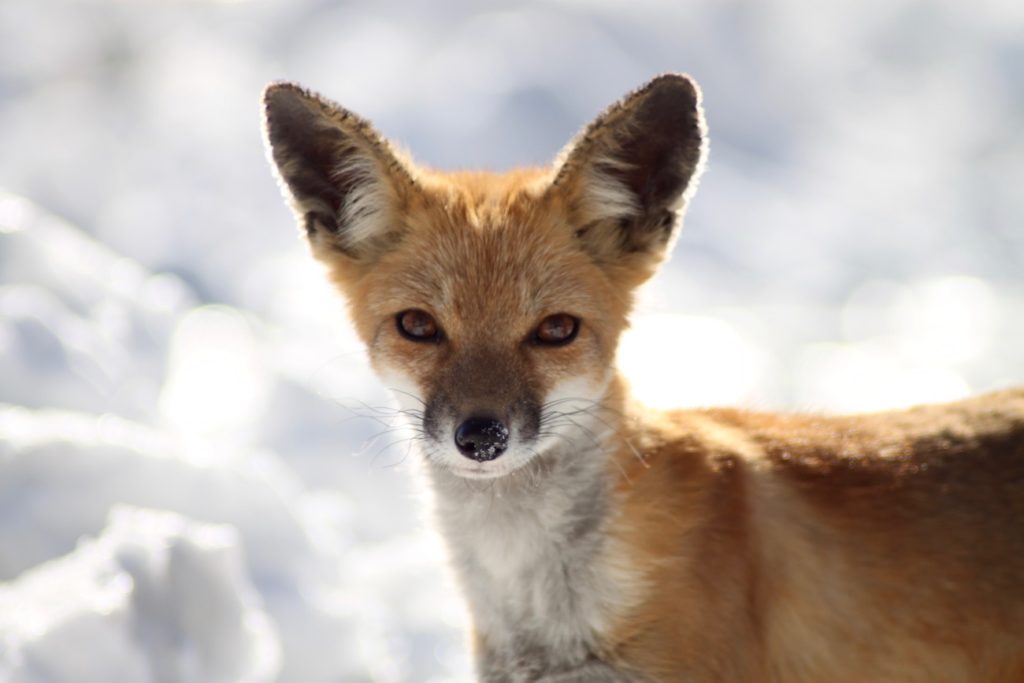
Fox Mating
Fox mating may occur from late December to March, but January and February are the usual months. Litters of four to seven kits are born in March or April. The kits begin to come out of the den when they are about a month old, and at 10 weeks, they leave the den area for the first time to accompany their parents on hunting trips. The family disperses in the fall. Foxes are chiefly nocturnal but may come out during day, especially at dawn and dusk.
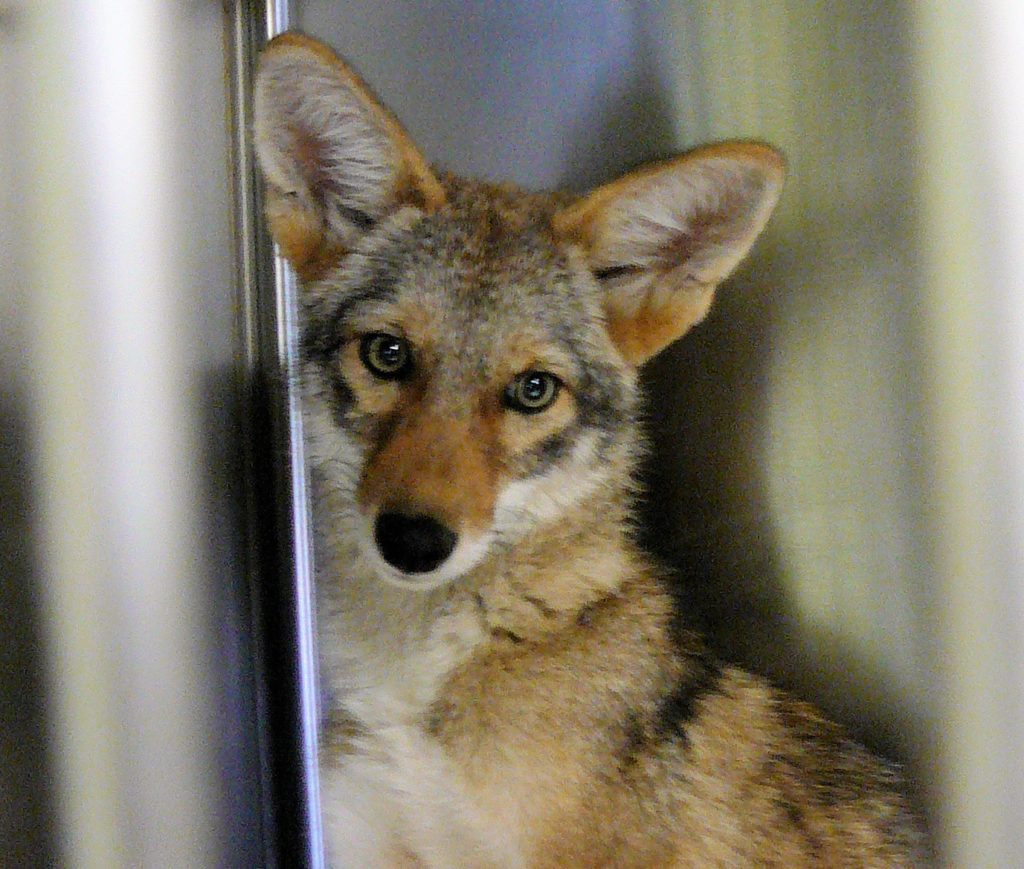
Should I pick them up?
If you come across what you think may be a coyote or fox pup DO NOT PICK IT UP. Mom and dad may be nearby. Pups wander from the den site and sometimes get into mischief. Try to give the pup a safe distance where you can watch to see if he/she goes back to the den or if parents return later (usually at night). When young, fox and coyote pups look similar, so it may be difficult to tell which you have found. If the animal is injured or bleeding, pick up the pup by wrapping it in a thick towel. Place the towel and pup inside a pet carrier or other containment area (even an upside-down laundry basket) and call OWL. We’ll help you make decisions about how to transport it to us.
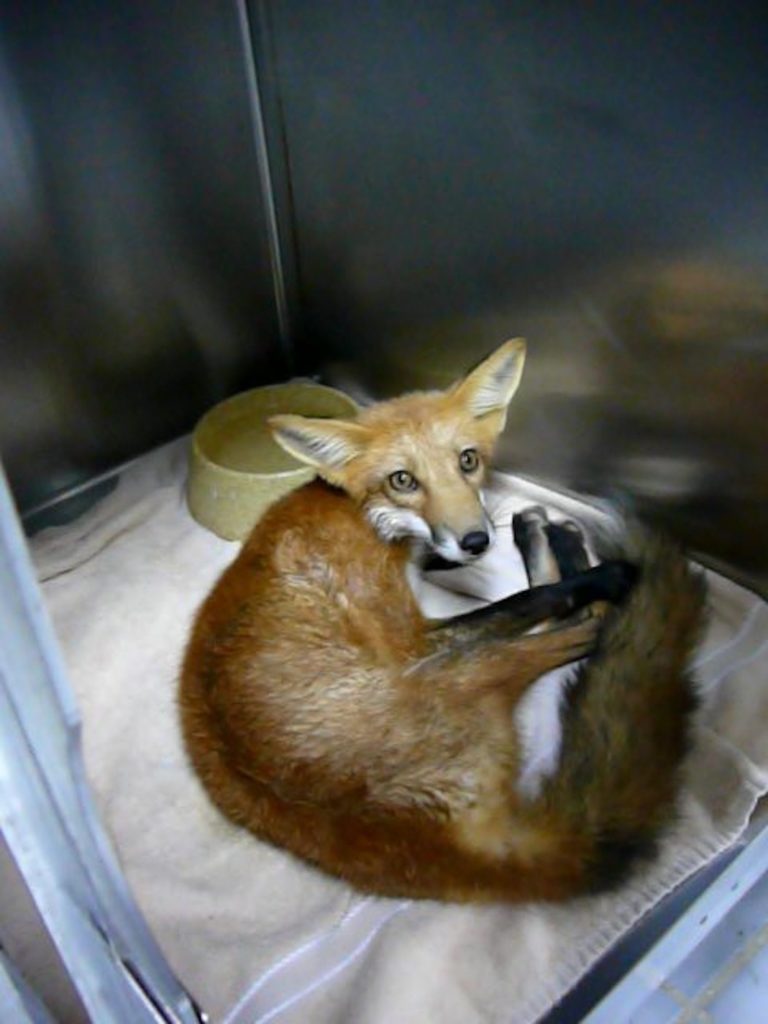
Can I raise the pup myself?
NO! Coyotes and foxes are very intelligent pack animals. They need to be raised with their own species so that they learn proper social behavior to survive in the wild. The more time a coyote or fox pup spends with humans, the higher the risk of permanent habituation, which diminishes or excludes their ability to be a good candidate for release.
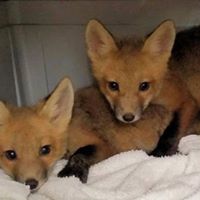
Rehab Centers
Rehab centers are extremely careful with foxes and coyotes to ensure that the pups grow up to be afraid of humans and stay as wild as possible. Our worst fear is that we will raise a pup that gets accustomed to people and then ends up getting shot by a farmer or law enforcement agency because of its behavior post-release. Please do not keep these pups as pets. It is illegal, and if caught, you will be charged, fined, and the law enforcement authorities will put the animal down.
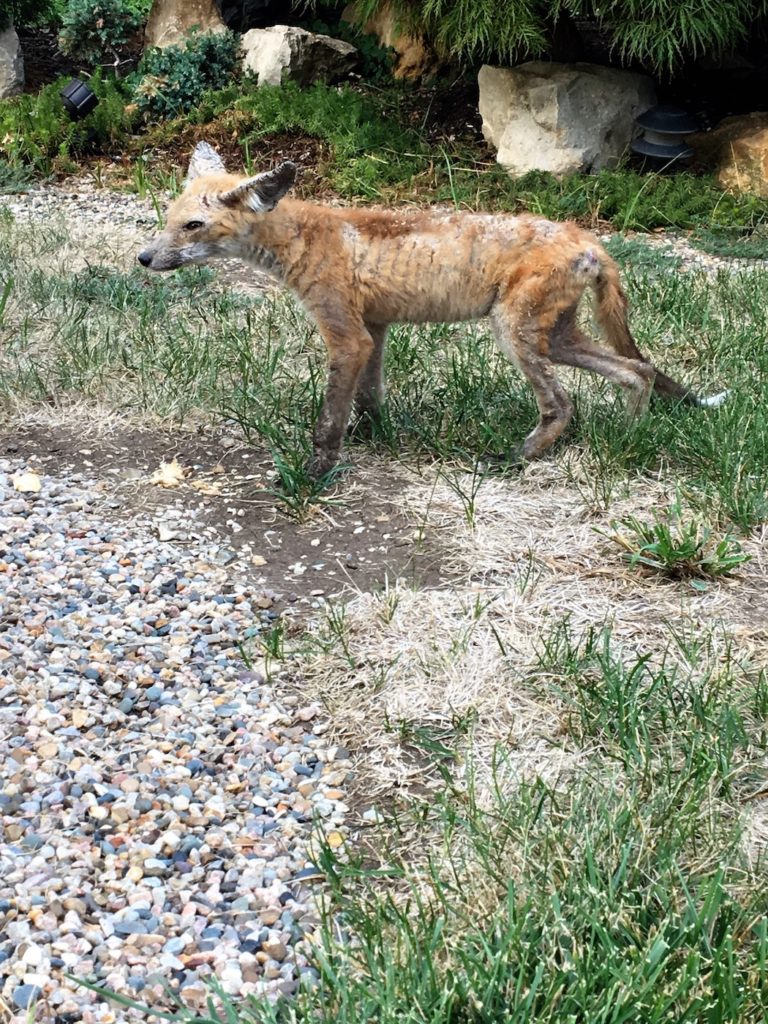
Mange in Foxes and Coyotes
Sarcoptic mange is treatable in foxes and coyotes. The animal is treated in his environment by setting up a bait station and putting the medication in the bait. It is a parasitic mite that causes hair loss and inflammation. Mange is a miserable condition caused by the sarcoptic mange mite. Symptoms include hair loss, inflammation, itching and pain that eventually will cause the death of coyotes and foxes. Please click on the link below for our fox mange protocol for treatment of this debilitating disease. Treating Sarcoptic Mange in Coyotes and Foxes
Common Concerns
The presence of a den is nothing to be concerned about. Issues you may encounter include the kits venturing out unattended while the parents search for food. The kits may look and act like puppies, and you may see them tumbling and romping in play in your yard. As cute as the kits are, it is important that you do not feed them or initiate contact. The kits may lose their fear of humans, a factor that will ultimately lead to their demise. Instead, you should bang metal pans and lids together to create a loud noise that will scare the kits and teach them a negative association with humans.
If the den absolutely MUST be relocated for the animal’s well-being, make the site less appealing by shining flood lights at the den opening or playing loud music. These things may prompt the animals to seek a quieter, darker place better suited to raising their young.
Coyotes begin looking for a den sometime in March or April and usually use it more than once. They are not urban dwellers and their dens are normally found in timber.
According to studies of coyote and fox stomach contents, livestock are a small percentage of the coyote and fox diet and are usually only preyed upon when other food sources are scarce. The only way to protect chickens is to reinforce the coop. Cover with heavy-gauge welded wire and another layer of finer mesh to prevent coyotes, foxes, and other animals from gaining access. Although reinforcing a pen may be a temporary inconvenience, once installed and maintained, it is a great long-term solution.
Neither the Centers for Disease Control and Prevention nor local and state health departments have classified coyotes or foxes as a human safety risk. Coyote attacks on people are extremely rare. It is essential to put risk in its proper context, which is why, statistically speaking, the risk of coyote harm to humans is virtually nil.
Most, if not all, of the few coyote/fox bites that occur nationally each year are directly related to coyotes being fed by humans. It is important to take proactive measures and ensure that there are no human-produced food sources, such as garbage or pet food, on your property that will entice coyotes with a quick, easy meal. Coyotes will occasionally prey on free-roaming cats and small dogs. Coyotes and foxes seek out the type of prey that will give them the greatest reward with minimal risk of injury to themselves. Their favored prey includes small mammals – rabbits, mice, rats, and squirrels. Coyotes and foxes also eat insects, fruits (persimmon trees are a favorite), and berries.
If a coyote or fox, or any wild animal, bites you or anyone you know, you should report the bite to your local health department office. There are no government agencies that will relocate a healthy coyote just because it scares you.
The Urban Coyote Project has good information on how to dissuade coyotes from your neighborhood. https://urbancoyoteresearch.com/coyote-info/how-avoid-conflicts-coyotes#:~:text=Do%20not%20feed%20coyotes,and%20pets)%20as%20possible%20prey
The First Treatment for Shock or Injury: Warm, Dark, and Quiet
If you find an animal that is injured or truly orphaned, the most important thing you must do is to keep them warm and quiet. Follow these protocols.
Container
Put baby in a shoebox or other small container with several small air holes in the lid and a small non-terrycloth towel, fleece cloth, or t-shirt in the bottom. Tape the lid to keep secure.
Juveniles or adults will need to be contained in a dog or cat kennel.
Heating Pad
If you have a heating pad, set to low and place the box half on/off the pad, so babies can move away from the heat if they need to. OR
Rice Bag
You can also fill a sock or knee-high pantyhose with uncooked dry rice. Microwave the rice-filled sock for 30 to 60 seconds. This heat source will last about 20 to 30 minutes. Place the rice sock in the container under the towel, and place the baby on or near it, but not directly in contact with the rice sock. OR
Ziploc bag
Fill a Ziploc bag with warm (not hot) water, put it inside another Ziploc bag, and place under the towel next to the baby. The double bag guards against leaks and prevents the animal from getting wet and chilled.
Food/Water
Do not attempt to feed or give them anything to drink. Keeping the baby warm is more important than feeding it.
If the animal is injured or bleeding, you can pick up the pup by wrapping it in a thick towel. Place the towel and pup inside a pet carrier or other containment area (even an upside-down laundry basket) and call Operation Wildlife. We’ll help you make decisions about how to transport it to us.
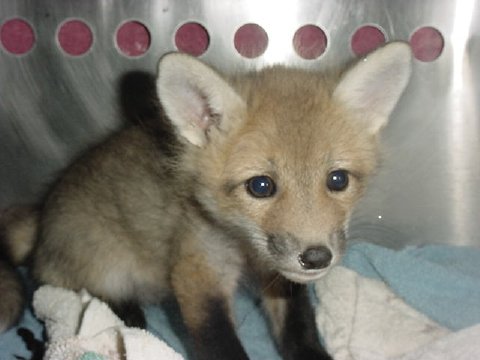
Do not feed the wildlife.
How to coexist
While many of us enjoy the small songbirds in our yards, large amounts and prolonged use of wild bird seed will attract not only the wild birds. Birdseed also attracts the rabbits, squirrels, mice, and gophers. These little creatures will in turn attract the coyote and other predatory animals. If you do feed the wild birds, put out only small amounts of seed at a time. Table scraps, leftovers, etc. should be discarded and not given to wildlife. Those who employ this practice may have neighbors who would prefer to keep the wildlife at a distance. Be a good neighbor and don’t encourage wildlife to become dependent on you.
Do not keep pet food outside. Coyotes are scavengers, and on a slow day, a bowl of pet food is great and will keep them coming back for more.
Pick up fruit. Grapes, berries, soft fruits, and avocados are a coyote’s dessert. Pick up fruit as soon as it ripens and keep rotted fruit off the ground.
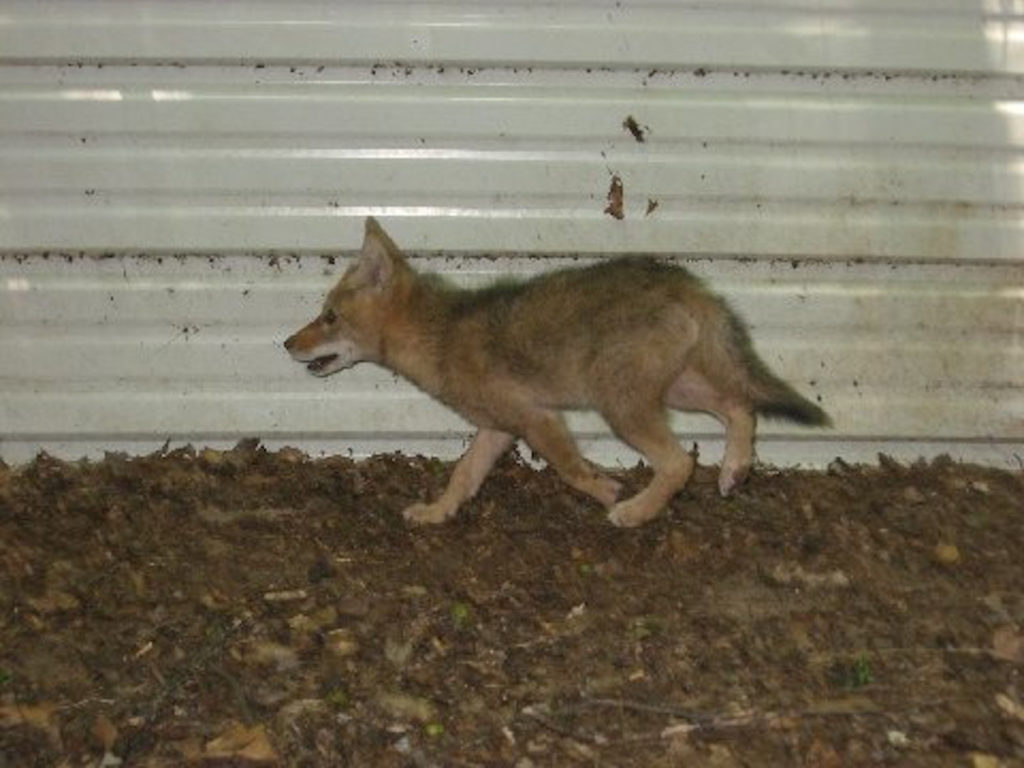
Make your trash cans inaccessible.
Keep trash can lids securely fastened or keep trash cans in your garage until trash day. Ammonia or pepper in the trash may also discourage the scavenging coyote.
Coyotes need to be fearful of man and run when they see us. That is what is best for us, and for them. Hoot, holler, jump around, throw things (not AT the coyote, just in the general direction), spray him with the hose, and/or rattle a large can with pennies or rocks in it. It is not mean to act this way toward them. It benefits them as much as it does us.
Warnings: If you see a coyote in the area, please make sure that your pets, especially small ones, are not left alone outdoors. Better safe than sorry. Coyotes do not see a difference between your cat or small dog and a wild rabbit – both are food to them. They will take the path of least resistance, and a small dog that is in a fenced area is a an easy meal for a coyote. Warn your neighbors so that everyone knows to keep watch over their pets. Foxes are not interested in eating your pets – they will however try to run them off if they have a den close by.

Contact Operation WildLife for help.

